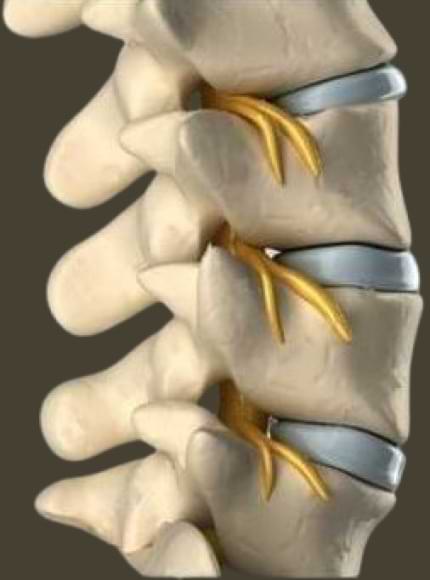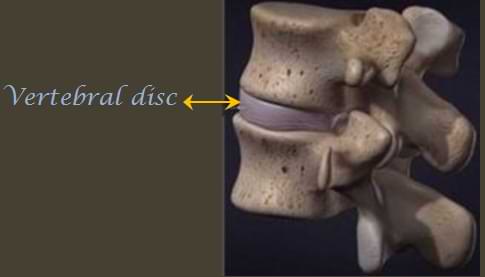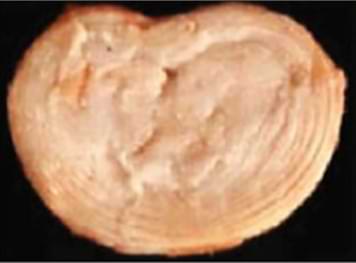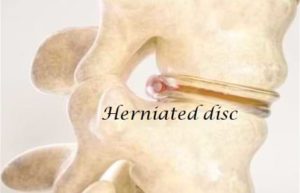DOES STRETCHING YOUR SPINE MAKE YOU TALLER ?
Anatomy of the Spine
Your spine is made up of the following :
1. Vertebrae – The bones that make up your spine.
2.Nerves – The entire nerve system that runs through your spine.
3.Discs – Spongy material that lies between adjacent vertebrae in the vertebral column allowing the nerves to run between each bone segment.
They also act as shock absorbers and allow the spine to flex.
Almost every one can benefit from stretching the soft tissues – the muscles, ligaments and tendons – in the back, legs, buttock, and around the spinal cord.
The vertebral column usually consists of 24 articulating vertebrae, and 9 fused vertebrae in the sacrum and the coccyx separated by Inter vertebral discs (or inter vertebral fibro cartilage) which lay between adjacent vertebrae in the spine.
The disc joints between vertebrae also make it possible for the spine to be moderately adjusted.
Inter-vertebral discs
~ Inter vertebral discs are cushions that function as shock absorbers to the back bone and they are fibro cartilaginous ( they contain fibrous bundles of collagen) in nature.
~ They are complex structures that consist of a thick outer ring of fibrous cartilage known as the annulus fibrosus, which surrounds a more gelatinous core known as the nucleus pulposus.
The nucleus pulposus is sandwiched inferiorly and superiorly by cartilage end-plates.
~ The major role of the spinal discs is mechanical, as they constantly transmit loads arising from body weight and muscle activity through the spinal column.
~ They provide flexibility to allow bending and twisting or wrenching.
~ Collectively, the discs account for approximately between one third and one quarter of the total spinal column length interjecting the back bones from the top to the sacrum.
~ There are approximately 23 discs in the spine; 6 in cervical, 12 in thoracic, and 5 in the lumbar region.
~ The discs in the lumbar region of the spine are approximately 7-10 mm thick.
~ Just like other cartilages, the intervertebral discs have no blood supply.
~ They are large and avascular and the cells depend on blood vessels at their margins (cartilaginous endplate) to supply nutrients by a process called osmosis. [1]
~ The nutrient supply to the nucleus cells can be disturbed at several points.
Factors that affect the blood supply to the vertebral body may significantly increase the rate at which discs degenerate.
Inter-vertebral discs Degenerate and reduce in height as we age
~ Discs degenerate far earlier than any other musculoskeletal tissues.
~ When Nobert Boos and colleagues comprehensively studied how and when spinal discs change in structure, they noticed that discs continuously degenerate and transform as we age.
They noted that at as early as 2 years in children, a slight opening or cleft forms on the disc and the nucleus begins transforming. [2]
~ As we grow older, degenerative changes on the disc take their toll.
Disc cells die, the mucous reduces, and the outer disc layer tears.
~ The first obvious signs of disc degeneration are noted among children aged between 11 and 16 years.
~ About 20% of teenagers have mild signs of disc degeneration and by age 50, 10% of mainly male population have severely damaged discs.
By age 70, the rate rises to 60%.
~ Disc degeneration is partly a result of the nucleus pulposus dehydrating thus limiting the ability of the disc to absorb shock.
This general shrinking of disc size is in part the reason why humans become slightly shorter as they age.
The severity of disc degeneration
~ Among children aged below 10 years, the boundary that separates the outer disc ring (the annulus fibrosus ) from the nucleus is clearly seen.
~As we age, the boundary between annulus and nucleus becomes less obvious, and the nucleus generally becomes more thick, stiff and less gel-like.
~With increasing age and degeneration, the disc structure completely changes and becomes more disorganized.
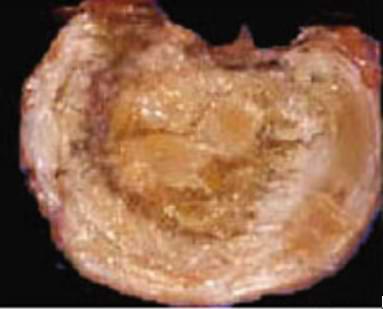
~ The most significant biochemical change to occur when a disc degenerates is loss of proteoglycan.
https://tinyurl.com/2p95tvcu
Proteoglycans are proteins with glycosaminoglycan component of the molecule, which offers hydration and swelling pressure to the tissue enabling it to withstand compressional forces.
https://tinyurl.com/3ew8t7my
~ Without proteoglycan in degenerate discs, the osmotic pressure of the disc falls and the disc potential to maintain hydration when it’s loaded declines.
degenerated discs have a lower water content than do normal age-matched discs hence, they lose height and fluid pretty fast when loaded. https://tinyurl.com/yv4epwpy
~ Without proteoglycan and with disc matrix disorganization, when a load is applied on the discs, the stress is transferred to the end plate or along the outer ring.
https://tinyurl.com/bdecrvu6
How Stretching can Improve disc health and contribute to height increase in torso.
Lack of nutrient supply to spinal disc cells is believed to be one of the principle contributors to disc degeneration.
spinal disc cells require nutrients such as glucose and oxygen to remain alive and active.
https://tinyurl.com/4esem9xu
1. First of all, back movement generally promotes the delivery of nutrients to the spine, thereby maintaining the health of the discs, muscles, ligaments, and joints.
Thus, although speculative, it’s possible that the various positions held by the spine during the stretching sessions retard disc degeneration by increasing the ability of nutrients to diffuse into the disc thereby maintaining and or improving the spine thickness.
2. Secondly, the stretching and positioning of the spine that occur during yoga exercises is believed to decrease the gradual disc degeneration that occurs with age because it’s suggested that the constant tension and compression of the disc during stretching exercises stimulates the synthesis of growth factors by the fibrocytes and chondrocytes residing in the disc and prevents their degeneration.[3]
3. When a study that aimed to investigate the impact of distraction (a type of mobility technique that we can incorporate into our stretching exercises in order to create more ‘space’ inside the joint complex) on spinal disc regeneration was conducted, the following was observed ;
~ 28 days of compression in rabbit disc caused degeneration via MRI study.
~ 28 days of distraction/ stretching regenerated the disc.
~ Distraction/ stretching results in disc rehydration, stimulates extracellular matrix gene expression, and increases numbers of cells.
https://tinyurl.com/mvbs8sf9
stretching the spine regularly can therefore control disc degeneration, and improve disc nutrition.
Most people are 1-3 inches (or even more) shorter than their maximum potential heights due to immense pressure exerted on the intervertebral discs on a regular basis and loss of spinal disc height due to disc degeneration.
With approximately 23 discs, adding just a few millimeters of thickness to each disc due to improved disc nutrition, besides stretching and lengthening the muscles in the trunk, stretching the back bone regularly will typically add approximately 3 – 5 inches of aggregate height thereby contributing to torso height.
If you are planning to make your spine longer, you may begin with the spine stretching exercises for height covered on how to make the torso longer article.
Factors that contribute to rapid spinal disc degeneration
1. Genetic factors
Recent research and mounting evidence indicates that genetic factors account for up to 75% of individual vulnerability to intervertebral disc degeneration as well as herniation far greater than the previously suspected environmental factors like smoking.
The reduction in extracellular matrix production, increases expression of inflammatory cytokines, and the rapid increase in production of enzymes that degrade biological molecules accelerate the disorganization of disc structure and integrity leading to it’s degeneration.
Since 1998, genetic influences have been confirmed by the identification of several genes forms associated with disc degeneration.
Back in 1991, d that 32% of adolescent patients with disc herniation had a family history of that lesion and that the relative risk of development of herniation of a lumbar disc before the age of twenty-one years is estimated to be approximately five times greater in patients with a positive family history.
https://tinyurl.com/36cr6sj4
2. smoking
Chronic cigarette smokers have an increased risk of low back pain which may be caused by disc degeneration.
In particular, it has been shown that nicotine curtails the regulation of both the proliferation rate of disc cells and manufacture of glycosaminoglycan.
studies on a porcine animal model showed that, after severe smoking, the capillaries surrounding the intervertebral discs greatly constrict and both the glucose and oxygen levels in the nucleus pulpous sharply decline.
Since disc malnutrition is considered to be the principle cause of disc degeneration, and smoking is responsible for curtailing disc nutrient supply, smoking is strongly linked to intervertebral disc degeneration.
https://tinyurl.com/2p95hw27
3. Overhead weight lifting and back weights.
An in vivo ( performed inside organism) mouse model study that aimed to asses the compression – induced degeneration of intervertebral discs showed that after mouse tail discs were loaded with an external compression device for one week, with increasing compressive stress, the inner and middle annulus gradually changed morphology and more intervertebral disc cells underwent apoptosis (cell death).
Static compressive stress that exceeds the disc’s swelling pressure changes hydration and stress distribution within spinal discs.
Though discs respond to some long-term loading regimens by increasing proteoglycan content, disc overloading like extremely heavy back loads can initiate a pathway that leads to disc degeneration.
This immense pressure on the back bone may cause lower back pain and over time lead to
spinal disc herniation.
Spinal disc herniation is when the outer ring of the disc breaks, giving way for the soft tissue of the inner disc.
In vitro ( performed outside organism) experimental tests show that in healthy discs, disc herniation is initiated by forces greater than those normally encountered by the discs leading to failure by the vertebral body rather than the disc itself.
This may be a result of injuries due to heavy lifting or other unknown reasons.
4. Excessive body weight/ obesity.
Obesity is strongly linked to biomechanical changes that damage the spine particularly due to fat accumulation in the trunk of the body.
This affects the health of intervertebral discs leading to intervertebral disc degeneration, reduction of disc height, herniation of the disc and increased compression forces on disc surfaces.
https://tinyurl.com/bddh2bme
5. Heavy physical work (occupational loading)
There’s a link between Lumbar disc degeneration and heavy load lifting.
Some individuals who experience degenerative changes in the discs may experience low back pain symptoms.
According to the US Bureau of Labor Statistics, in 2000 alone,11 to 13 million people developed lower back pain.
And in 2001, 65% of all reported cases of low back injuries were caused by loading the spine beyond it’s limit, whereas 60% occurred during lifting.
When a cross section study that included workers who load and unload fruit boxes almost every day at the San Chung fruit and vegetable wholesale Market in Taiwan and the walk-in clinic patients nurses at the Internal Medicine Clinic of the National Taiwan University Hospital was conducted ,it was established that with increasing lifting load, there was an increased risk for disc bulging compared with low lifting load.
The aim of the study was to assess the relationship between lifetime cumulative lifting load and lumbar disc degeneration.
When a person performs a lifting task, the compression load on the spinal disk is increased.
https://tinyurl.com/2p856xab
However, there are inconsistencies in findings regarding the relationship between occupational loading and spinal disc degeneration or structural damage.
Out of the 10 studies evaluated, 2 did not identify a relationship between occupation loading and disc degeneration, 1 study found more degeneration in those with less load.
7 studies identified some significant difference between loading groups with more load being associated with more degeneration.
Thus, it’s generally acknowledged that there is moderate grade evidence of an association between occupational loading and disc degeneration.
https://tinyurl.com/5474aezj
6. Health conditions
These include;
a. Atherosclerosis
b. Sickle cell anemia
c. Caisson disease
d. Gaucher’s disease
Further reading on ways to rehydrate and rebuild the spinal discs like the use of glucosamine and other natural methods can be done in The Grow Taller After Puberty Exercise routine hand book »
AUTHOR BIO
As a short guy who was psychologically distressed almost everyday due to the challenges he faced in life accountable to his height, Dennis Raney (Bsc.) finally somehow found a way to overcome this adversity by naturally increasing his height with lifestyle and healthy changes.
He has been researching this topic for over a decade and practically applying the knowledge so he decided to share his wealth of information about the topic of increasing height both during and after puberty in the book and on this blog.
Feel free to connect with him for a conversation:
Email: Dennis »»
Facebook: Connect »»
NEXT : how to grow taller after puberty complete guide.
Please Share if you Like this Page… Thanks !
